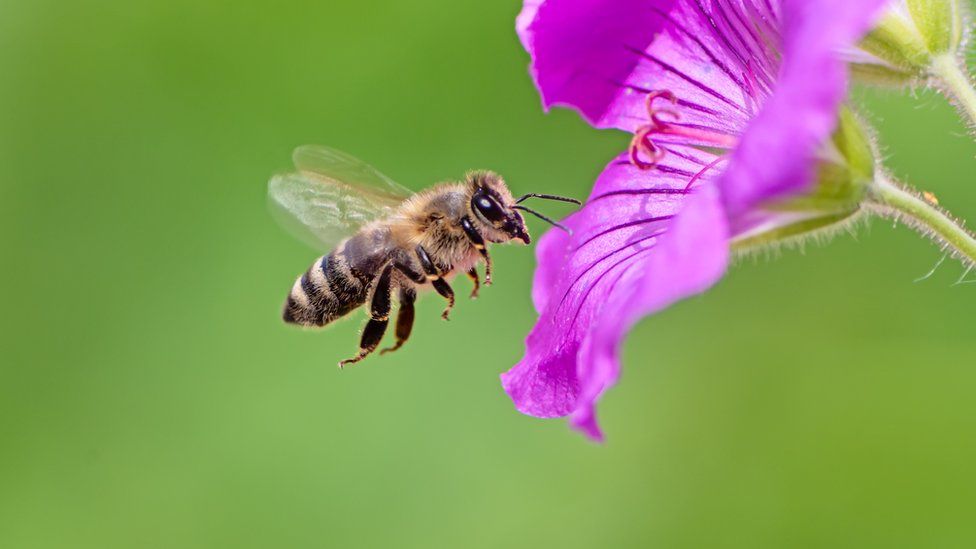Bees: Nature’s elite pollinators
Bees are remarkable creatures that are untiring in the crucial task of pollinating our plants thereby…

Bee
Yunusa Isa
Nature has a role for all living creatures interwoven like a perfect cobweb where a glitch, diminishing or absence of certain roles and functions puncture a hole in the cobweb pattern which disrupts nature’s biodiversity.
For bees, their role is often overlooked by many as simply honey producers that grace our dishes, medicinal ingredients. Some others see them as those buzzing insects ready to unleash coordinated swarms and sting attacks even unprovoked. However, not all bees sting and the swarming and sting tactics were instinctive territorial and self-defence mechanisms.
- Oil revenue: Nigeria’s economy about to collapse, ex-Emir Sanusi raises alarm
- Real firing on all cylinders as Villarreal come to town
Bees are remarkable creatures that are untiring in the crucial task of pollinating our plants thereby ensuring a healthy food supply that sustains us all. Of about 20,000 species of bees, only about 7 are honeybees and according to the United Nations Food and Agriculture Organization (FAO), “more than 75% of the world’s food crops depend, to some extent, on pollination”.
Fruits, vegetables and crops are a by-product of pollination. Pollination is the process where pollen is transferred from male parts of one flower to the female parts of another flower called ovary of the same species resulting in fertilization and subsequent production of seeds.
Several creatures (insects, birds, bats and others) are involved in pollination but bees stand out in this arduous task. The pollen is rich in protein and bees collect them in order to feed their developing offspring which then produce bee milk to feed the brood and queen.
A typical bee will visit roughly 7000 flowers in a day hence the reason for the saying “as busy as bees”. While gathering these pollens, many are electrostatically attracted and attached to their hairy body, legs and mouths thereby enabling high probability of transfer to other plants of the same species in the process. Individual bees tend to focus on one type of flower at a time which results in cross fertilization.
You may ask, why are flowers exhibiting diverse, distinctive and sometimes elaborate mono and multi-coloured leafs and petals? The answers are partly to attract pollinating insects such as bees and guide them to nectar tubes usually 2cm long in the case of Honeybee pollinated flowers. Pollen sections of the flowers are usually a must pass leading to the nectary. Bees are particularly attracted to yellow, white and blue flowers.
According to the UN’s Food and Agriculture Organization (FAO), there’s a worrisome decline in the population of pollinators most especially bees mainly due to intensive agricultural practices, unsustainable land use, habitat destruction, overly use of pesticide, herbicides, diseases and impact of climate change. In FAO’s estimate, “close to 35% of invertebrate pollinators, particularly bees and butterflies face extinction globally”.
For example, in August 2021, the United States Fish and Wildlife Service announced the addition of Franklin’s Bumblebee sighted last in 2006 to the endangered species list according to Matt Kelly writing in the National Geographic.
Healthy bee populations are crucial in meeting UN’s Sustainable Development Goals SDG2; SDG12 and SDG15 respectively. According to Greenpeace, In Denmark, in an effort to save the bees and ensure healthy food and crops production, there’s a law that requires large agricultural lands to plant 5% of the soil with flowers for bees.
Planting a diverse set of native plants which produce flowers at different times of the year will ensure year-round bees activities and a healthy bees population in our gardens, small and large scale farms and forests for the mutually beneficial plants and pollinators symbiotic relationships. Supporting and encouraging local bee farmers in the conservation of these incredible creatures.
Global initiatives such as 2018 – 2030 plan of action of the International Pollinators Initiative, Convention on Biological Diversity, FAO and Intergovernmental Platform on Biodiversity and Ecosystem Services (IPBES) which seek stricter national, regional and global regulations on indiscriminate use of pesticides, herbicides, fungicides and other harmful chemicals which threaten bees and other pollinating insects.
Yunusa Isa writes via [email protected]
